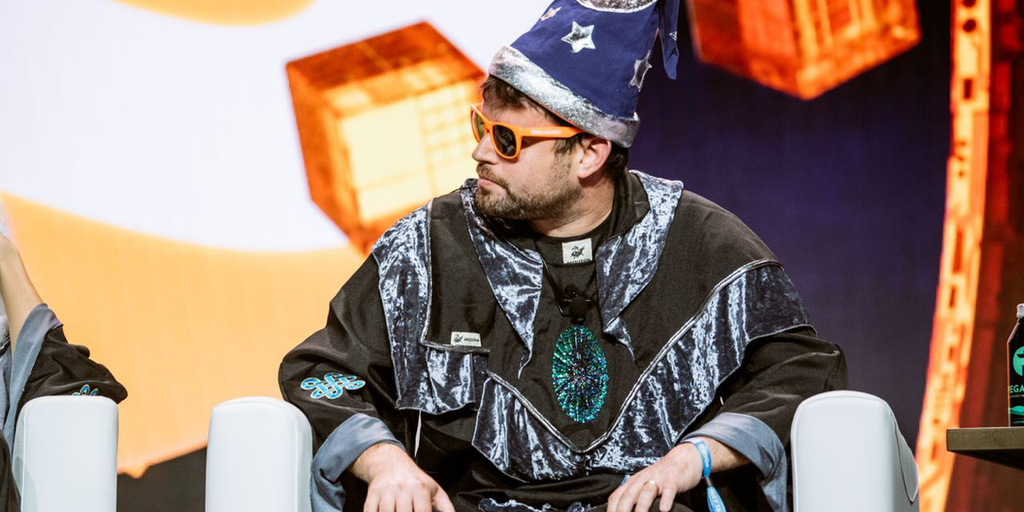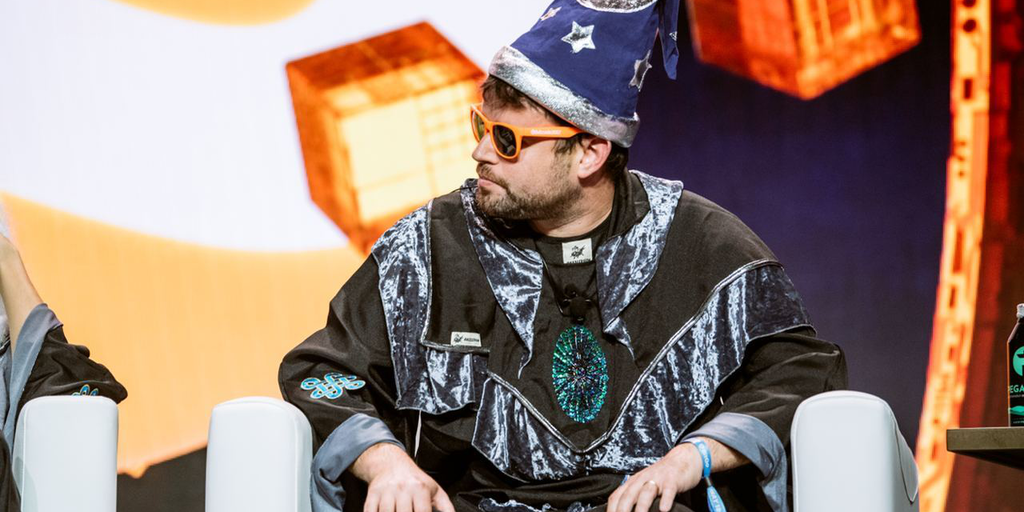
Along with the anticipated Bitcoin halving event, 4/20 has come and gone—but the famed meme number is already back in the BTC conversation amid an attempt to change Bitcoin’s software.
Advocates of restoring a Satoshi-era command in Bitcoin’s programming language introduced new code Monday, outlining how “OP_CAT” could be used to bring more functionality to Bitcoin. One notable addition: including 420 as the change’s purported BIP number.
As of this writing, OP_CAT hasn’t been assigned a so-called BIP number in the code repository where other proposed changes to Bitcoin’s software have historically been vetted, debated, and tracked. Short for Bitcoin Improvement Proposal, the code repository maintained by volunteers tracks BIPs up to number 389, starting from initiatives considered in 2011.
Instead, OP_CAT’s 420 figure is reflected in a standalone GitHub page that outlines the proposal and was shared by Taproot Wizards co-founder Udi Wertheimer on Monday. A months-old version of OP_CAT, posted to GitHub by BastionZero co-founder Ethan Heilman, a key developer behind the proposal, leaves a section for OP_CAT’s BIP number blank.
“OP_CAT aims to expand the toolbox of the [Bitcoin] developer with a simple, modular, and useful opcode,” the GitHub page shared by Wertheimer states, adding that “OP_CAT was available in early versions of Bitcoin.”
OP_CAT’s approval would enable developers to create so-called covenants on Bitcoin, according to a blog post from Luxor Technology’s Head of Research Colin Harper. Specifying conditions under which Bitcoin can be spent in the future, covenants can be used in areas like automated payments and reversible transactions.
In January, Wertheimer told Decrypt that covenants could lay the groundwork for crypto tech on Bitcoin like smart contracts and bridges. The proposal’s renewed framing comes as developers push the technical envelope on Bitcoin in other ways, such as the protocols Ordinals and Runes that respectively seek to emulate NFTs and meme coins on Bitcoin.
Numbers with strong memetic roots such as 69 or 420 have been mainstays of internet culture for years—well enshrined back when memes often included top or bottom text. Today, the two numbers’ significance is reflected in crypto through token standards such as BRC-69, and, more recently, anticipation that Bitcoin’s halving could’ve landed on the 20th of April.
“It is generally frowned upon by the Bitcoin community for BIP authors to assign BIP numbers to themselves,” Wertheimer said in a post on Twitter (aka X). “Thankfully, BIP-420 was not self-assigned by its authors […] BIP-420 was assigned by the Bitcoin community.”
frequently asked questions about BIP-420
yesterday, the proposed OP_CAT upgrade for bitcoin was assigned a BIP number: BIP-420!
this is an important milestone and everyone is excited! we received many questions, so in this post we will try to explain what this all means!… pic.twitter.com/erf4jzGpXy
— Udi | BIP-420
(@udiWertheimer) April 23, 2024
Who else was calling for such a number in the Bitcoin community for OP_CAT was initially unclear. But as Wertheimer explains, the proposal was crafted by Botanix Labs’ lead software engineer Armin Sabouri and BastionZero’s Heilman. The two developers were approached by Taproot Wizards—eager to help—after OP_CAT was published, CoinDesk reported in February.
Wertheimer created Taproot Wizards alongside influencer Eric Wall early last year. As Ordinals grew in popularity, the firm’s collection of Bitcoin-based collectibles became an early standout—elevated by bombastic debates about Ordinals’ worth featuring Wertheimer and Wall.
The group’s endeavors became associated with a movement inside the Bitcoin community to grow beyond the traditionalist vibes promulgated by so-called “laser eyes,” who often believe Bitcoin should stick to a pure focus on monetary transactions. Announcing it raised $7.5 million in a funding round led by the venture capital firm Standard Crypto last November, Wertheimer said the money would be used to “finally move Bitcoin forward.”
Taproot Wizards launched its Quantum Cats Ordinals collection in January, comprising 3,333 cat images that were created using Ordinals inscriptions. Dedicated to OP_CAT, the cheapest inscription available from the collection is listed for 0.42 BTC or $26,600, as of this writing, on the NFT marketplace Magic Eden.
OP_CAT, originally crafted by Bitcoin’s pseudonymous creator Satoshi Nakamoto, was scrapped in 2010 due to concerns the so-called opcode could be used in a denial of service (DoS) attack on Bitcoin. Representing a basic command in Bitcoin’s programming language, OP_CAT allowed users to marry two data points together in a transaction’s code structure.
Following Bitcoin’s Taproot upgrade in 2021, however, limits on how much data can be included in certain structures for Bitcoin transactions “nullified” historic concerns surrounding OP_CAT, according to Luxor Technology’s Harper.
On Twitter, a post shared by Casa co-founder and CSO Jameson Lopp—including a gif of Elon Musk smoking marijuana during a 2018 podcast appearance—suggested that the OP_CAT’s new 420 link could help it “appeal to lots of people.”
Neither Wertheimer nor Taproot Wizards’ pseudonymous CTO Rijndael immediately responded to requests for comment from Decrypt.
Edited by Andrew Hayward
Stay on top of crypto news, get daily updates in your inbox.
Read More: decrypt.co









 Bitcoin
Bitcoin  Ethereum
Ethereum  Tether
Tether  XRP
XRP  Solana
Solana  USDC
USDC  Dogecoin
Dogecoin  Cardano
Cardano  TRON
TRON  Lido Staked Ether
Lido Staked Ether  Wrapped Bitcoin
Wrapped Bitcoin  Sui
Sui  Wrapped stETH
Wrapped stETH  Chainlink
Chainlink  Avalanche
Avalanche  Hyperliquid
Hyperliquid  Stellar
Stellar  Shiba Inu
Shiba Inu  Hedera
Hedera  LEO Token
LEO Token  Bitcoin Cash
Bitcoin Cash  Toncoin
Toncoin  Litecoin
Litecoin  Polkadot
Polkadot  WETH
WETH  USDS
USDS  Monero
Monero  Wrapped eETH
Wrapped eETH  Binance Bridged USDT (BNB Smart Chain)
Binance Bridged USDT (BNB Smart Chain)  Bitget Token
Bitget Token  Pepe
Pepe  Pi Network
Pi Network  Ethena USDe
Ethena USDe  Coinbase Wrapped BTC
Coinbase Wrapped BTC  WhiteBIT Coin
WhiteBIT Coin  Bittensor
Bittensor  Uniswap
Uniswap  Dai
Dai  Aave
Aave  NEAR Protocol
NEAR Protocol  Aptos
Aptos  OKB
OKB  Ondo
Ondo  Jito Staked SOL
Jito Staked SOL  Tokenize Xchange
Tokenize Xchange  Cronos
Cronos  Ethereum Classic
Ethereum Classic  BlackRock USD Institutional Digital Liquidity Fund
BlackRock USD Institutional Digital Liquidity Fund